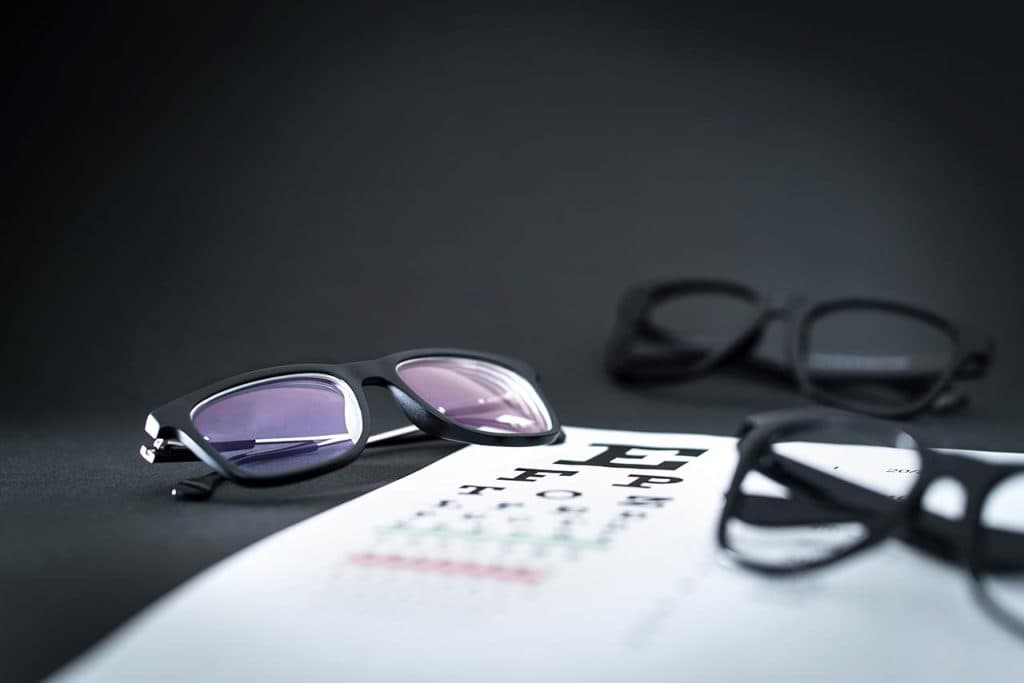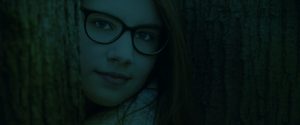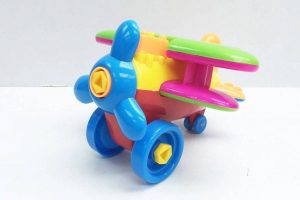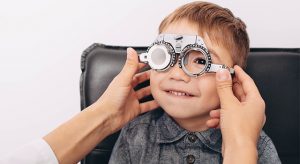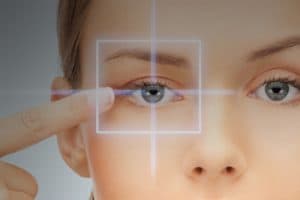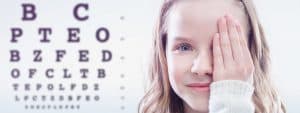While myopia is common vision problem that makes eyewear a new necessity, it can also cause serious eye diseases later in life.
Myopia occurs when the light entering the eye is focused in front of the retina, rather than directly on the retina. Myopia develops when the eye grows too long from front to back (axial length), and generally worsens over time until the eye is fully developed— usually around the age of 20.
While distance-only glasses and contact lenses are the traditional method of vision correction for myopia, these lenses focus light in a way that can actually increase the axial length of the eye— ultimately causing myopia to worsen.
A child with myopia has an increased risk for developing vision threatening eye diseases in the future, such as:
Is there a way to prevent my child’s myopia from worsening?
A number of recent studies suggest that it may be possible to control myopia by totally stopping, or at least slowing down, its progression during childhood and teenage years.
Myopia management is a treatment program aimed at controlling myopia, keeping the level of myopia as low as possible, in order to reduce your child’s risk of developing vision threatening eye diseases later in life.
Myopia management has shown to decrease myopia progression by up to 78 percent.
Myopia management can involve the use of eyeglasses, contact lenses, and eye drops— all scientifically proven to aid in the control of myopia progression.
Contact an eye doctor near you who can manage your child’s myopia.
SEE RELATED: Myopia Management FAQs
A closer look at myopia management
Eyeglasses
Eyeglasses are a popular choice for children with myopia, as they enable vision acuity for distant images. Many times, reduced focusing skills can contribute to the development of myopia— these children may need a bifocal or multifocal lens to support the child’s focusing skills.
Bifocal and multifocal lenses contain different lens powers throughout the lens, and enable clear vision at all distances. The specific power for the child’s near vision reduces the stress on the eyes, and possibly the progression of myopia.
Contact lenses
Contact lenses provide clear vision at all distances, with a wider field of view as compared to eyeglasses. A multifocal contact lens works similar to eyeglasses to improve distance vision acuity while simultaneously reducing the stress on the eyes for reading and other near vision tasks. This can consequently reduce myopia progression.
Atropine eye drops
These medicated eye drops can be used to dilate the eye’s pupils during an eye exam, but have also been proven to reduce myopia progression. A very low dose of this eye drop is placed in the child’s lower eyelid every day.
This method is effective for children between the ages of 8 and 15, it only requires a single drop into the child’s eye once per day. Side effects may include blurry near vision or light sensitivity. Children will still need to wear their regular glasses or contacts during the day, but the eye drops can assist in slowing down the worsening myopia.
Orthokeratology (Ortho-k)/ Corneal refractive therapy (CRT)
Ortho-k reduces myopia progression through the use of specialized rigid contact lenses that reshape the cornea, the front outer surface of the eye. The contacts work to flatten the cornea, thereby changing the way light is focused on the retina at the back of the eye.
The contact lenses are inserted before bedtime, and are generally only worn while your child sleeps. Ortho-k provides clear vision for the whole day, thereby eliminating the need for wearing glasses or contacts during the day.
Ortho-k has been proven to reduce the rate of myopia progression in children by up to 50 percent.
Schedule an appointment with an eye doctor who can start managing your child’s myopia.
Can vision therapy control myopia progression?
Vision therapy is an appropriate and effective treatment for children who have acquired myopia as a result of reduced eye focusing skills. Vision therapy involves a personalized program that trains the child’s visual system, including the eye-brain connection, to work more efficiently— thereby improving focusing abilities. Children who have reduced focusing skills, have a greater risk of developing progressive myopia.
When should my child start myopia management?
It is best to begin Myopia management as soon as possible to increase optimal results. Myopia generally worsens through the teenage years, and stabilizes as the child reaches adulthood, so these years are the optimal time to seek Myopia management options for your child.
LEARN MORE: Guide to Pediatric Eye Conditions
There are now excellent myopia management options to help your child. Contact an eye doctor with experience in myopia management will be able advise which treatment option is most effective for your child.
